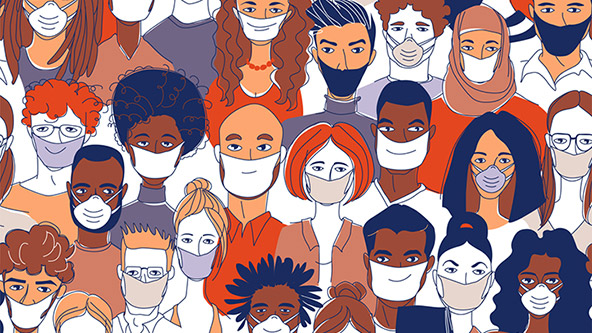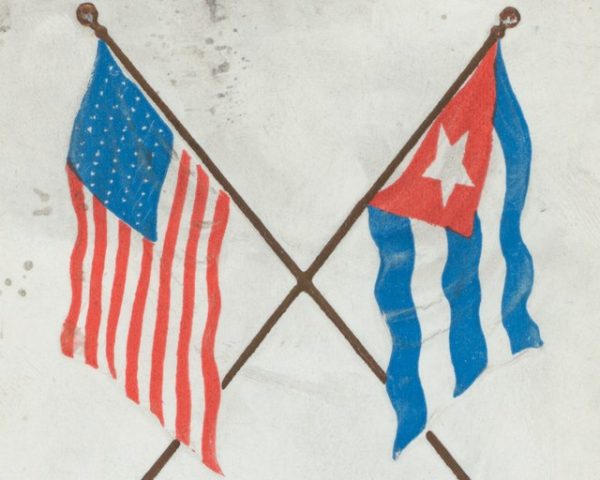The COVID-19 pandemic exposed deep inequalities between rich and poor countries. The WHO Pandemic Agreement hopes to improve global equity and avoid mistakes made during COVID-19.
By Jon Cohen

“Me first”—that’s how Tedros Adhanom Ghebreyesus, head of the World Health Organization (WHO), described the wealthy world’s response to the COVID-19 pandemic when he kicked off negotiations for a global “pandemic treaty” in December 2021. Even before vaccines had proved safe and effective, rich countries had purchased enough doses to cover their entire population several times, whereas lower and middle-income countries had little or no vaccine. The pandemic treaty would address that searing inequity, Tedros vowed, along with many other problems identified during the COVID-19 pandemic, leaving the world better prepared for the next one.
That goal is now in jeopardy. After eight rounds of often contentious negotiations in Geneva, the WHO Pandemic Agreement is nearing the finish line. On 7 March, WHO sent member states a draft text that will be subject to one more round of negotiations starting on 18 March. In late May, the final draft heads to the World Health Assembly, the annual gathering of WHO member states, for approval.
But deep divisions remain around the 31-page text, and some wonder whether there is enough time to resolve them properly. Observers from developing nations say the agreement doesn’t give them strong enough assurances that they will fare better during the next pandemic. “There is a systematic marginalization of developing country proposals on equity,” says Nithin Ramakrishnan, an India-based lawyer with the Third World Network, one of more than 100 “stakeholders” that provided input during the negotiations. “The process is being carefully designed to avoid any form of detailed legal obligations.”
Failing to reach an agreement would be a serious blow, says Alexandra Phelan, a global health specialist at the Johns Hopkins Center for Health Security, another stakeholder. “This treaty fills a lot of gaps and is really important because it builds trust between countries about setting expectations and norms,” she says. “If it fails, it says we’re going to look at COVID-19 and say that was OK.”
The spark for the treaty was a May 2021 report from an independent panel, convened by Tedros, that issued a scathing critique of the world’s response to the COVID-19 pandemic. Surveillance did not keep up with the virus, responses lacked a sense of urgency, health systems buckled, and countries hoarded masks, protective suits, and vaccines, the panel wrote, creating “a toxic cocktail which allowed the pandemic to turn into a catastrophic human crisis.”
To avoid a repeat, the pandemic agreement aims to bolster the world’s defenses on many fronts. It seeks to strengthen surveillance for pathogens with “pandemic potential” and reduce the risk they will jump from animals to humans or leak out of a lab. Countries must also commit to better managing antimicrobial resistance, strengthening their health systems and sanitation, and making progress toward universal health coverage. (Separate talks aim to amend the International Health Regulations, which compel countries to report health emergencies within their borders.)
The agreement’s most controversial part is a global system to share pathogens and their genetic codes while ensuring access to “benefits” from the research—including vaccines. Developing countries are loath to share information about how pathogens are spreading and evolving if they can expect little in return, as happened during the COVID-19 pandemic. “Vaccine nationalism” may have cost up to 1.3 million lives in low- and middle-income countries by the end of 2021, one analysis suggests.
The current draft of the pandemic agreement attempts a fix. It proposes a Pathogen Access and Benefit-Sharing (PABS) System that compels countries to share sequence information and samples with WHO-coordinated networks and databases. In return for access to these data, manufacturers of diagnostics, therapeutics, and vaccines will be required to provide 10% of their products free of charge and 10% at not-for-profit prices “during public health emergencies of international concern or pandemics.”
A comment in the 29 February issue of Nature, cosigned by 290 scientists from 36 countries, defended this plan, which, the authors said, “could just as easily be called ‘science for science.’” The PABS system, they argued, “will support more pandemic science, and ensure that scientists’ contributions result in their communities having access to lifesaving advancements.”
Pharmaceutical companies resent such restrictions, however. “Scientists need rapid access to pathogens and data without conditions in order to quickly develop safe and effective countermeasures to save lives,” the International Federation of Pharmaceutical Manufacturers and Associations said in an 11 March statement.
At the same time, many developing countries say the draft doesn’t go far enough, and that details are vague. “While some progress has been made, it is still unclear what incentives the pandemic treaty offers to political leaders that would make them behave differently during the next public health emergency or how industry … would prioritize populations who are thousands of miles away,” says Nelson Aghogho Evaborhene, a vaccine specialist at the University of the Witwatersrand. He points to passages that say states will have to “promote” and “facilitate and incentivize” companies to share know-how as examples of “weaker language [that] would barely alter the status quo.”
Gian Luca Burci, an international law researcher at the Graduate Institute of International and Development Studies in Geneva—another stakeholder—says a “front” led by the European Union, the United States, and Switzerland has attempted to “water down” the PABS agreement. “These are countries with big pharmaceutical companies that are lobbying like crazy to save the bottom line,” Burci says. “Of course countries will not make an official statement, ‘We are trying to kill equity.’ But listen to what they say in public meetings and read between the diplomatic lines, as well as what the industry is clearly saying: ‘Don’t touch patents, and please let us have the viruses without all the strings attached.’”
Helen Clark, former prime minister of New Zealand and a co-chair of the panel that produced the critical 2021 report, is disappointed as well. “Member states should now be asking themselves: Are they really working towards an agreement which would ensure that the management of future pandemic threats is more collaborative, faster, smoother, and more equitable—or not,” Clark says.
For the text to be adopted as a classic international treaty, two-thirds of WHO’s member states must approve it at the World Health Assembly. If instead it follows a pathway used for “regulations,” the votes of only half of the member states are needed. Even if the agreement is adopted, countries can still decide not to join. As with other international treaties, a Conference of Parties will be formed to hammer out further details and supervise the treaty’s implementation.
In a talk on 13 March, Tedros urged member states to reach compromises soon. He recalled that in 1946 the WHO Constitution was negotiated in just 6 months—long before email and Zoom calls existed. “Everyone will have to give something, or no one will get anything,” he said.
Evaborhene agrees. “Trade-offs and compromises in the final text must uphold principles on equity,” he says. “Otherwise, we may continue to sow seeds of plagues and count the dead when the next pandemic hits.”





